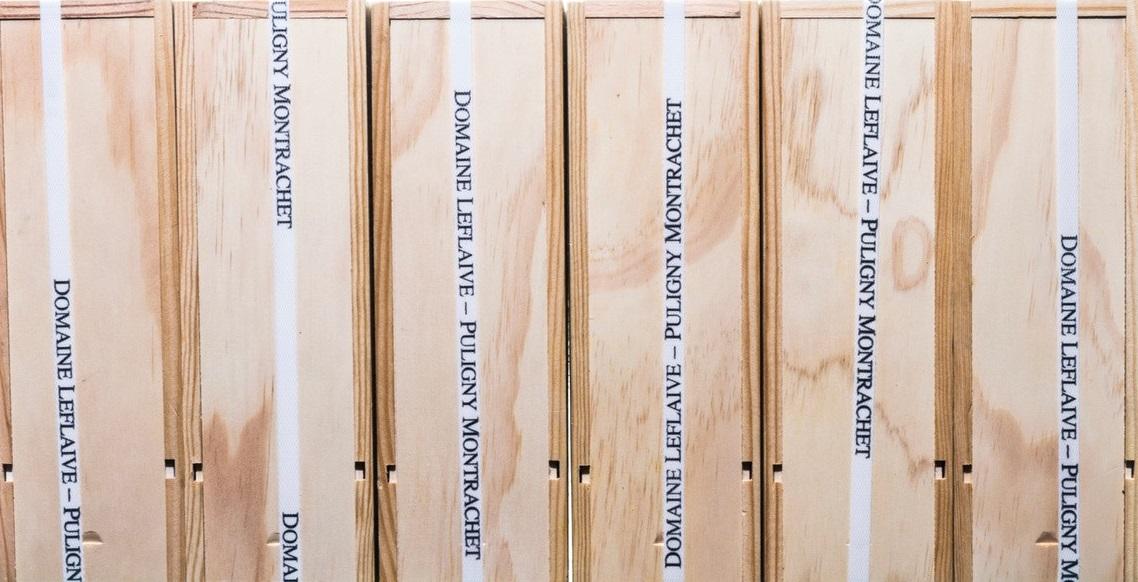
The most prestigious domaine in Puligny-Montrachet and one of the most revered names in the Côte d’Or, Domaine Leflaive was founded in 1905 with the purchase of 25 hectares of vines by Joseph Leflaive, a former engineer and native of Puligny. Leflaive upgraded the vineyards from the 1920s through a programme of planting more suitable rootstocks and incrementally bottling under the domaine label. In 1953, Joseph’s sons Vincent and Jo(seph-Régis) assumed the mantle, and together they built the reputation of the estate. An eloquent English speaker, Vincent Leflaive travelled outside of France in the 1970s and 80s, developing its international renown.
Domaine Leflaive’s much-envied vineyard holdings comprise 24 hectares in Puligny-Montrachet, of which five are Grands Crus. Recent acquisitions of some 20 hectares in the Maçonnais (under the Domaine Leflaive banner) have extended the estate’s reach. More recently land has been acquired in the Hautes Côtes de Beaune, and in 2018 two boutique négoçiant businesses were initiated: Esprit Leflaive for red wines (Corton Les Grandes Lolières, Pommard Les Arvelets and Nuits-Saint-Georges); and Leflaive & Associés (Charmes-Chambertin, Monthélie, Auxey-Duresses, Rully Premier Cru and Bourgogne blanc), both making wine with bought-in grapes.
In 1982, Jo’s son Olivier was appointed to manage the state alongside his uncle, Vincent. Prior to Vincent’s passing in 1993 his Vincent’s daughter Anne-Claude took over his position, managing together with her cousin, both answering to family shareholders. Initially a source of name confusion, Olivier developed his own ‘récoltant-négociant’ business alongside under the Olivier Leflaive label. In 1994 Olivier was asked to leave to focus on his own winery, leaving Anne-Claude to decide the future path of the family domaine.
Partly in response to criticism of the high yields attained under her father Vincent, and partly influenced by her personal ecological beliefs, she converted the vineyards to organic culture and experimented with biodynamic techniques following the tenets of Rudolf Steiner. She converted the estate fully to biodynamics in 1997. While there was initial scepticism amongst neighbouring vignerons and among merchants, the acknowledged quality of the wines in that era dispelled doubters. Anne-Claude was a high-profile pioneer of biodynamic viticulture yet she was not dogmatic, happy to let the wines prove her beliefs right or wrong.
In 1992, Domaine Leflaive announced its first vintage of its Montrachet Grand Cru, the pre-eminent white wine of Burgundy. The estate had acquired a miniscule 8/100ths of a hectare of this fabled soil, the entire production fitting into a specially made quarter-size stainless steel fermenting tank. Distributors were allocated single bottles of each vintage from the half-barrique that was achieved. Bottles regularly trade at over £10,000 in the market today.
Anne-Claude passed away following an illness in 2015. She was superceded by former business executive Brice de la Morandière, her nephew and great grandson of Joseph, therefore fourth generation of the family in wine. He initiated a number of changes and refinements, recruiting the former régisseur of Domaine de la Vougeraie, Pierre Vincent, as directeur-général to manage the vineyards and winemaking, whilst affirming his full support for the biodynamic method. Morandière committed to bottling under DIAM synthetic corks from the 2014 vintage not only to avoid cork taint but also to address the concerns over the occurrence of premature oxidation (premox) in many top white burgundies since the mid-1990s. Controversially, he initiated a three year programme to recork 23,000 bottles of Grands and Premiers Crus of pre-2014 vintages still stored in the Puligny cellars, inserting the DIAM closure and rejecting any that were clearly sub-standard.
Domaine Leflaive wines have traditionally been fermented in cask, then aged in barriques for around 12 months prior to being transferred into stainless steel tanks for bottling. Other than the Montrachet, which is of necessity aged in a single new barrel, the Crus are matured in 25% new oak. Perhaps because of this conservative barrel policy, even when young, the wines exhibit an ethereal dimension that is the hallmark of the estate; yet at all levels they possess a rewarding ability to age. In every carton or case there is an advice label indicating the earliest suggested drinking date, which for Premier Crus is normally around 10 years.
Vineyards of Domaine Leflaive
Grands Crus (5 hectares)
- Montrachet
- Chevalier-Montrachet
- Bâtard-Montrachet
- Bienvenues Bâtard -Montrachet
Premiers Crus (11 hectares)
- Les Pucelles
- Les Folatières
- Les Combettes
- Le Clavoillon
- Sur le Dos d’Âne (in Meursault)
Also 8 hectares comprising Puligny-Montrachet and Bourgogne Blanc
Enquire here about Provinance's availability of wines from this producer.
